family
 When my daughter, Amy Royce and her family first moved to the Seattle, Washington area, I started looking around online to see what sights there might be for them to go visit. The first thing I came across was the Pacific Queen shipwreck. I was excited to tell them about a shipwreck in their area. I thought it might be a cool thing to go see. Amy researched it too, and found that it was on a private beach. We were disappointed, but I couldn’t get it off my mind.
When my daughter, Amy Royce and her family first moved to the Seattle, Washington area, I started looking around online to see what sights there might be for them to go visit. The first thing I came across was the Pacific Queen shipwreck. I was excited to tell them about a shipwreck in their area. I thought it might be a cool thing to go see. Amy researched it too, and found that it was on a private beach. We were disappointed, but I couldn’t get it off my mind.
Bob and I had a little time on Saturday, so we decided to head back out to Puget Sound. I got an idea to see if there was a place where we could actually see the ship, and found that we could see it from Picnic Point Park. While we could not get close to the private beach where the Pacific Queen rests, we were treated to some really good views of the ship, 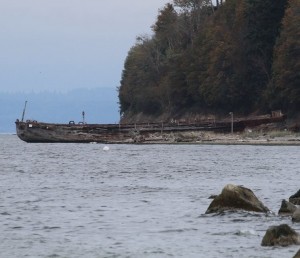 and I was so excited. This was something I really wanted to see.
and I was so excited. This was something I really wanted to see.
I started researching the origins of the Pacific Queen online, I found that she was a old minesweeper. The ship was not wrecked, but rather brought to the site by a man who planned to salvage the metal on her. So the only wreck she had was when she was run aground to her final resting place. The Pacific Queen is one of 27 boats that were brought to the sight over the years, but she is the only one that really still resembles a ship. Several of the boats are underwater except during low tide, and those still look somewhat like ships too.
I admit that I was a little disappointed that it wasn’t an actual shipwreck, but then again, the ship was built in the 1800s. It was actually brought to its current location in 1929, and really has been an area attraction since that time. The best way to get up close is by kayak, but the beach is off limits. Apparently you can walk the distance from Picnic Point Park to the Pacific Queen during the low tide, but it is not recommended that you go onto the actual beach. Nevertheless, a few people have ventured close, and if the owner was in a good mood, they might have been treated to a few of the stories surrounding the boats and their arrival at the current sight.
 In the end, with the boat viewing and my research, I felt very pleased with this adventure. Whether she had wrecked or not, the Pacific Queen was a very cool boat. It was amazing to sit and wonder where she had been and what she and her crews had seen. A minesweeper must have been an important boat, and I would think that would be a dangerous job. If you didn’t see a mine and you bumped into it…well, it was all over for you. Nevertheless, the crews of the Pacific Queen must have been good at their jobs, because she survived the war and ended up on her current resting place, a ship of beauty and intrigue, sought out by many and having her picture on the Internet for all to see. I know that for me, it was a view I will never forget.
In the end, with the boat viewing and my research, I felt very pleased with this adventure. Whether she had wrecked or not, the Pacific Queen was a very cool boat. It was amazing to sit and wonder where she had been and what she and her crews had seen. A minesweeper must have been an important boat, and I would think that would be a dangerous job. If you didn’t see a mine and you bumped into it…well, it was all over for you. Nevertheless, the crews of the Pacific Queen must have been good at their jobs, because she survived the war and ended up on her current resting place, a ship of beauty and intrigue, sought out by many and having her picture on the Internet for all to see. I know that for me, it was a view I will never forget.

 My grand niece, Hattie Joy Parmely, is celebrating a milestone today. She has arrived at her very first birthday. Her mom, Ashley Parmely tells me that Hattie Joy has lived up to her name quite well, because she is a joy for her whole family to be around. Hattie is a very busy little girl, and sometimes it’s hard for her mom to get pictures of her, because she is moving so fast. I suppose that is why she takes videos to share. And in many ways, I like to see the videos, because it shows me the true Hattie Joy personality that is quickly developing in this baby girl. Hattie is turning into a little toddler now, because she has learned to walk, and she even has three teeth now, so she is starting to love snacking too.
My grand niece, Hattie Joy Parmely, is celebrating a milestone today. She has arrived at her very first birthday. Her mom, Ashley Parmely tells me that Hattie Joy has lived up to her name quite well, because she is a joy for her whole family to be around. Hattie is a very busy little girl, and sometimes it’s hard for her mom to get pictures of her, because she is moving so fast. I suppose that is why she takes videos to share. And in many ways, I like to see the videos, because it shows me the true Hattie Joy personality that is quickly developing in this baby girl. Hattie is turning into a little toddler now, because she has learned to walk, and she even has three teeth now, so she is starting to love snacking too.
Hattie tries to be very helpful. Her dad, my nephew, Eric Parmely is always working on their house, because 
 they bought it as a fixer upper, and they are quickly turning it into their dream home. Hattie is very much on board with the projects that her mom and dad are doing, and while she may not be the greatest help to them right now, she still helps…like it or not. Of course, helping her dad build is not the only big job that little Hattie does. She makes a great motor for her big sister, Reagan’s tricycle. I suppose it’s a good thing that Reagan isn’t very heavy, but for a little one year old girl, Hattie is fully capable of giving her big sister just the push she needs…provided they don’t run into any obstacles and big sister decides to back up, because Hattie isn’t too sure of how to back up yet. Hattie also helps her mom with the earth moving projects they are doing…one rock or handful of dirt at a time. She has a little trouble with that job though. Once she gets to rocks and dirt in her mom’s hand, she knocks them back out. Some jobs just take a little bit of training.
they bought it as a fixer upper, and they are quickly turning it into their dream home. Hattie is very much on board with the projects that her mom and dad are doing, and while she may not be the greatest help to them right now, she still helps…like it or not. Of course, helping her dad build is not the only big job that little Hattie does. She makes a great motor for her big sister, Reagan’s tricycle. I suppose it’s a good thing that Reagan isn’t very heavy, but for a little one year old girl, Hattie is fully capable of giving her big sister just the push she needs…provided they don’t run into any obstacles and big sister decides to back up, because Hattie isn’t too sure of how to back up yet. Hattie also helps her mom with the earth moving projects they are doing…one rock or handful of dirt at a time. She has a little trouble with that job though. Once she gets to rocks and dirt in her mom’s hand, she knocks them back out. Some jobs just take a little bit of training.
A girl can’t spend all her time working though, and Hattie loves to dance. She is a little bit too young to go clubbing right now, so she settles for struttin’ her stuff whenever her mom puts on some music. Hattie likes dancing so much, that she has even incorporated it into one of her other favorite activities…eating. She puts some food in 
 her mouth, and then proceeds to dance it down to her tummy…all the while, sitting in her highchair. Now, not everyone can pull that one off, but Hattie does it with style…and with a smile on her little face. It would seem that our Miss Hattie Joy is a born entertainer. With everything she’s got going for her, who knows maybe she will be on Broadway someday, but I guess we will have to let her get a few years under her belt, before we will really know for sure. Today is Hattie’s 1st birthday. Happy birthday Miss Hattie Joy!! Have a great day!! We love you!!
her mouth, and then proceeds to dance it down to her tummy…all the while, sitting in her highchair. Now, not everyone can pull that one off, but Hattie does it with style…and with a smile on her little face. It would seem that our Miss Hattie Joy is a born entertainer. With everything she’s got going for her, who knows maybe she will be on Broadway someday, but I guess we will have to let her get a few years under her belt, before we will really know for sure. Today is Hattie’s 1st birthday. Happy birthday Miss Hattie Joy!! Have a great day!! We love you!!
 In a time when our police officers are being randomly attacked, I think it is important to remember just who it is that comes running in to protect those in need of assistance. Police officers have such a complicated job. Part of the people they come in contact with are in need of their assistance, and when they are, they are grateful for the help. The other part of the people are the criminal side, and they are the ones, of course, who hate the cops. And unfortunately, sometimes the lines get very blurred. There are people in need of help, but they don’t want that help, and those who the cops are arresting or giving a ticket to, who then steps in the assist the very police officer who was arresting them. Those situations are really quite surprising…amazingly so.
In a time when our police officers are being randomly attacked, I think it is important to remember just who it is that comes running in to protect those in need of assistance. Police officers have such a complicated job. Part of the people they come in contact with are in need of their assistance, and when they are, they are grateful for the help. The other part of the people are the criminal side, and they are the ones, of course, who hate the cops. And unfortunately, sometimes the lines get very blurred. There are people in need of help, but they don’t want that help, and those who the cops are arresting or giving a ticket to, who then steps in the assist the very police officer who was arresting them. Those situations are really quite surprising…amazingly so.
Nevertheless, I can see how being a police officer would be a difficult occupation. When the good guys can turn into the bad guys, and the bad guys can turn into the good guys, it creates a situation whereby an officer just doesn’t know what to expect going into any situation. Still, they go into those situations, knowing the possible perils, but knowing too that the work they do is important.
Many people don’t really give much thought to the life of a police officer, but when you have two of them in your very close family, you just naturally feel differently about them. You know their hearts and you know their level of integrity. They aren’t just a random police officer, but rather, they are family, and you love them. That is the situation in my family. We have two police officers in our midst. Leutenant Chris Hadlock, of the Casper Police Department, and State Trooper Jason Sawdon of the Wyoming Highway  Patrol, are both exceptional officers. I’m sure that is why my family and I take personal offense when someone decides that police officers are not important. There are many times when any of us could be in a really bad place, were it not for a police officer. So the next time you are stopped for speeding, and you are tempted to be angry about it, remember…you were speeding, and they officer is just doing his or her job. Any time we break the law, we are a risk for others…people, just like us, who that officer has sworn an oath to protect. Swallow that anger, and take your medicine. You deserve it. Today is a day to honor our police officers. Thank you Chris and Jason, and the officers in the Casper area and the nation. We appreciate your service. Police lives matter. Thank a police officer today.
Patrol, are both exceptional officers. I’m sure that is why my family and I take personal offense when someone decides that police officers are not important. There are many times when any of us could be in a really bad place, were it not for a police officer. So the next time you are stopped for speeding, and you are tempted to be angry about it, remember…you were speeding, and they officer is just doing his or her job. Any time we break the law, we are a risk for others…people, just like us, who that officer has sworn an oath to protect. Swallow that anger, and take your medicine. You deserve it. Today is a day to honor our police officers. Thank you Chris and Jason, and the officers in the Casper area and the nation. We appreciate your service. Police lives matter. Thank a police officer today.
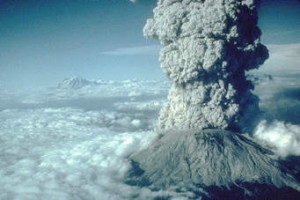 In April of 1993, my sisters, Cheryl Masterson, Alena Stevens, Allyn Hadlock, and I took a trip to the Seattle, Washington area where our sister, Caryl Reed and her family were living at the time. I had not been there before, and so was excited at the prospect. We planned to have dinner at the Space Needle, do some shopping, visit Friday Harbor, and the one I was most looking forward to, Mount Saint Helens. Since the mountain had blown up on May 18, 1980, I had been intrigued. My parents had gone there, but I was married and so didn’t go along. On that trip, because the roads there didn’t open until May, and this was April, the viewing of Mount Saint Helens was not to be, unfortunately. I was disappointed.
In April of 1993, my sisters, Cheryl Masterson, Alena Stevens, Allyn Hadlock, and I took a trip to the Seattle, Washington area where our sister, Caryl Reed and her family were living at the time. I had not been there before, and so was excited at the prospect. We planned to have dinner at the Space Needle, do some shopping, visit Friday Harbor, and the one I was most looking forward to, Mount Saint Helens. Since the mountain had blown up on May 18, 1980, I had been intrigued. My parents had gone there, but I was married and so didn’t go along. On that trip, because the roads there didn’t open until May, and this was April, the viewing of Mount Saint Helens was not to be, unfortunately. I was disappointed.
I will never forget hearing about the coming eruption in the news, on March 15, 1980. When we first heard about it, people were riveted to their televisions, but as time went on, I suspect that people got bored with it. After two months, it got to the point where we all wondered if it was just a false alarm. Then, at 8:32am Pacific Time on May 18, 1980, the mountain blew up…literally. Suddenly, everyone was riveted to the television again. It was just shocking, and since 9-11 had not happened yet, it seemed like the most shocking thing we had ever experienced…in my lifetime anyway. I remember going out to my car and finding ash all over it. I had a hard time believing that a volcano that was over a thousand miles away in Washington state, could dump ash on my 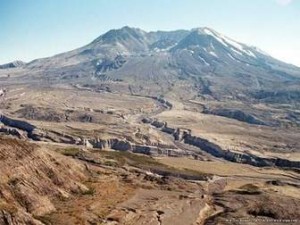 car in Casper, Wyoming. The ash went completely around the globe within a matter of days. Of course, it was nothing like what they had in the area surrounding the mountain.
car in Casper, Wyoming. The ash went completely around the globe within a matter of days. Of course, it was nothing like what they had in the area surrounding the mountain.
When my daughter, Amy Royce and her husband Travis and son, Caalab moved to the Seattle area, and then decided to renew their vows, we decided to make the trip up for the ceremony. I wanted another chance to get to see Mount Saint Helens. My first attempt was thirteen years after the eruption, and that attempt was twenty two years ago. It was time. We had a rather small window of time to go see the mountain, with everything that has been planned at Amy’s house. So, Thursday was the day. Unfortunately, we seem to have picked the worst day of the days we would be here. Nevertheless, we went in the hope of a view of the…for me anyway…elusive Mount Saint Helens. Our grandchildren, Shai and Caalab Royce went with us. They were born well after Mount Saint Helens blew, and really knew very little about it…until today, that is.
Our first stop was to the visitors center, where we looked at the exhibits displayed there and watched a really good movie that told of the events leading up to and including May 18, 1980 and beyond. After we left, I think  they had a much better idea about the magnitude of the whole event. We drove up to the area where we could finally view the mountain itself, only to find it sitting right there in front of us…completely shrouded in clouds and mist. We could see where the ash had landed and where the water and mud had carved out deep crevasses. We could see where erosion had taken its toll on the area, and where trees had been wiped out, and now rather small ones have grown up in their place. We could see the base of the mountain, and really, almost half way up it, but the now famous space left when the top that is no longer there blew, was still not visible to me. Sadly, I guess some things are simply not meant to be.
they had a much better idea about the magnitude of the whole event. We drove up to the area where we could finally view the mountain itself, only to find it sitting right there in front of us…completely shrouded in clouds and mist. We could see where the ash had landed and where the water and mud had carved out deep crevasses. We could see where erosion had taken its toll on the area, and where trees had been wiped out, and now rather small ones have grown up in their place. We could see the base of the mountain, and really, almost half way up it, but the now famous space left when the top that is no longer there blew, was still not visible to me. Sadly, I guess some things are simply not meant to be.
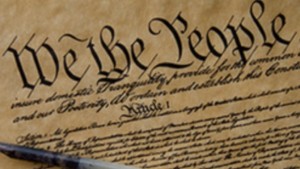 The Constitution has been in the news a lot these days, or shall I say, the violation of the Constitution. Sometimes I wonder if the signers of the Constitution would even be able to recognize the nation that they had envisioned when they wrote the Constitution. I happen to think they would not, but then even at the signing of the Constitution there was controversy. In that way, I suppose there would always be those who would do everything in their power to change or even do away with the Constitution. At the time of the Constitutional Convention in Philadelphia, only 38 of the 41 delegates present at its conclusion, agreed to sign the document. There were those, even then, who disagreed with what was laid out there. I suppose that is common in anything in life. Needless to say, it was a hard-won battle to win the ratification by the necessary nine out of thirteen US states in existence at the time.
The Constitution has been in the news a lot these days, or shall I say, the violation of the Constitution. Sometimes I wonder if the signers of the Constitution would even be able to recognize the nation that they had envisioned when they wrote the Constitution. I happen to think they would not, but then even at the signing of the Constitution there was controversy. In that way, I suppose there would always be those who would do everything in their power to change or even do away with the Constitution. At the time of the Constitutional Convention in Philadelphia, only 38 of the 41 delegates present at its conclusion, agreed to sign the document. There were those, even then, who disagreed with what was laid out there. I suppose that is common in anything in life. Needless to say, it was a hard-won battle to win the ratification by the necessary nine out of thirteen US states in existence at the time.
Before the Constitution, the United States was operating under the Articles of Confederation, which was ratified several months before the British surrender at Yorktown in 1781. The Articles of Confederation and Perpetual Union were an agreement among all thirteen original states in the United States of America. Basically it was the first constitution. Even when not yet ratified, the Articles provided a system for the Continental Congress to direct the American Revolutionary War, conduct diplomacy with Europe, and deal with territorial issues and Native American relations, but it was weak in that it didn’t allow for our president, a court system, or taxation, thereby leaving us with a weaker government. Congress was also given no authority to enforce its requests to the states for troops, giving us a weaker military force. Yet, even with the proposed changes, there were those who would disagreed with the proposed new Constitution.
When the Constitutional Convention was convened on May 25, 1787, the plan had been to amend the Articles 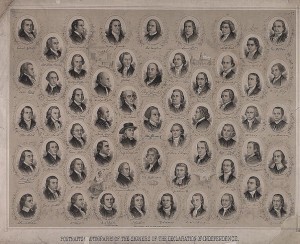 of Confederation, but that plan was quickly set aside in favor of writing a completely new Constitution. The meeting was held in Philadelphia’s Pennsylvania State House. It is now known as Independence Hall. Revolutionary War hero George Washington, a delegate from Virginia was elected as convention president. The debate was heated, but in the end, the delegates came up with a brilliant federal organization that boasted an intricate system of checks and balances. One of the main divisions in the discussions was that the more populated states wanted a state representation in Congress, and the smaller states wanted equal representation. That problem was solved by the Connecticut Compromise, which proposed a two chamber legislature with proportional representation in the lower house known as the House of Representatives and equal representation of the states in the upper house known as the Senate. It seemed a fair way to do it, but there are still those who disagree to this day.
of Confederation, but that plan was quickly set aside in favor of writing a completely new Constitution. The meeting was held in Philadelphia’s Pennsylvania State House. It is now known as Independence Hall. Revolutionary War hero George Washington, a delegate from Virginia was elected as convention president. The debate was heated, but in the end, the delegates came up with a brilliant federal organization that boasted an intricate system of checks and balances. One of the main divisions in the discussions was that the more populated states wanted a state representation in Congress, and the smaller states wanted equal representation. That problem was solved by the Connecticut Compromise, which proposed a two chamber legislature with proportional representation in the lower house known as the House of Representatives and equal representation of the states in the upper house known as the Senate. It seemed a fair way to do it, but there are still those who disagree to this day.
It would seem like they had an instant solution, but that wasn’t so. As dictated by Article VII, the document would not become binding until it was ratified by nine of the 13 states. On December 7, Delaware, Pennsylvania, New Jersey, Georgia, and Connecticut ratified the Constitution in quick succession. Other states, especially Massachusetts, opposed the Constitution, because it failed to reserve undelegated powers to the states and lacked constitutional protection of basic political rights, such as freedom of speech, religion, and the press, which I personally agree with. By February 1788, they had reached a compromise under which Massachusetts and other states would agree to ratify the document and that amendments would immediately be added to provide the protections they proposed. The Constitution was then narrowly ratified in Massachusetts. Maryland and South Carolina quickly followed. On June 21, 1788, New Hampshire became the ninth state to ratify the document, and it was agreed that government under the US Constitution would begin on March 4, 1789. In June, Virginia ratified the Constitution, followed by New York in July. The Constitution was signed on this day, September 17, 1787.
As promised, on September 25, 1789, the first Congress of the United States adopted 12 amendments to the 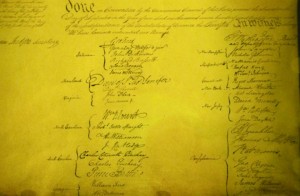 US Constitution, called the Bill of Rights. The Bill of Rights was then sent to the states for ratification. Ten of these amendments were ratified in 1791. In November 1789, North Carolina became the 12th state to ratify the US Constitution. Rhode Island, which opposed federal control of currency and was critical of compromise on the issue of slavery, resisted ratifying the Constitution until the US government threatened to sever commercial relations with the state. On May 29, 1790, Rhode Island voted by two votes to ratify the document, and the last of the original 13 colonies joined the United States. Today, the US Constitution is the oldest written constitution in operation in the world. That should say something, and it should be reason to protect it.
US Constitution, called the Bill of Rights. The Bill of Rights was then sent to the states for ratification. Ten of these amendments were ratified in 1791. In November 1789, North Carolina became the 12th state to ratify the US Constitution. Rhode Island, which opposed federal control of currency and was critical of compromise on the issue of slavery, resisted ratifying the Constitution until the US government threatened to sever commercial relations with the state. On May 29, 1790, Rhode Island voted by two votes to ratify the document, and the last of the original 13 colonies joined the United States. Today, the US Constitution is the oldest written constitution in operation in the world. That should say something, and it should be reason to protect it.

 In their first twenty years of marriage, my daughter, Amy Royce and her husband Travis lived here in Casper, Wyoming, where they raised their two children, Shai and Caalab, but Travis had always wanted to live somewhere else, and Amy was pretty tired of the harsher winters we have here. So, when their son Caalab, their youngest child, graduated from high school, they decided to make the move to a different climate…at least a little bit different one. Seattle, Washington still has the changes of season, but winter is shorter and has less snow and more rain. Amy loves the rain, you see…so much so, that it is very difficult for her to stay indoors when it rains, because all she can think of is driving in the rain. That said, they chose the Rainforest of western Washington as their location of choice to spend their next twenty years.
In their first twenty years of marriage, my daughter, Amy Royce and her husband Travis lived here in Casper, Wyoming, where they raised their two children, Shai and Caalab, but Travis had always wanted to live somewhere else, and Amy was pretty tired of the harsher winters we have here. So, when their son Caalab, their youngest child, graduated from high school, they decided to make the move to a different climate…at least a little bit different one. Seattle, Washington still has the changes of season, but winter is shorter and has less snow and more rain. Amy loves the rain, you see…so much so, that it is very difficult for her to stay indoors when it rains, because all she can think of is driving in the rain. That said, they chose the Rainforest of western Washington as their location of choice to spend their next twenty years.
Amy has been one of my very capable helpers when it came to taking care of her grandparents, but that time 
 of need is pretty much in the past now, as is their obligation as parents to get their children through school. That puts this couple is a place of few obligations, and being debt free, which sets them very free. They can make their decisions based on the fun things they want to do, and not the best place to raise their kids or the best schools to send them too…although I’m not saying that Seattle wouldn’t have fit the bill on both of those items either. Nevertheless, I am thankful that they raised their children here so I could watch them grow up and really get to know them before they moved away. Their daughter, Shai Royce decided that she didn’t want to move, and so she still lives here. Their son, Caalab made the move and will go to school there. I miss him very much.
of need is pretty much in the past now, as is their obligation as parents to get their children through school. That puts this couple is a place of few obligations, and being debt free, which sets them very free. They can make their decisions based on the fun things they want to do, and not the best place to raise their kids or the best schools to send them too…although I’m not saying that Seattle wouldn’t have fit the bill on both of those items either. Nevertheless, I am thankful that they raised their children here so I could watch them grow up and really get to know them before they moved away. Their daughter, Shai Royce decided that she didn’t want to move, and so she still lives here. Their son, Caalab made the move and will go to school there. I miss him very much.
For their twentieth anniversary, they decided to renew their vows in a ceremony on the beach…a very romantic idea. So, the plans were made and the guests invited, and today I find myself and my husband, Bob in the 
 Seattle suburb of Lynnwood, looking forward to a lovely ceremony on Saturday evening. The renewal of vows is such a deep expression of the love two people have shared for a long time, and one I highly recommend. Bob and I renewed ours at sea on a cruise we took for our twenty fifth anniversary. It was amazing, as I know their beach ceremony will be. Amy and Travis have always loved the beach…especially at sunset, which is well documented by all of her beach sunset pictures. Today is Amy and Travis’ 20th Anniversary. Happy Anniversary Amy and Travis!! We love you both very much!!
Seattle suburb of Lynnwood, looking forward to a lovely ceremony on Saturday evening. The renewal of vows is such a deep expression of the love two people have shared for a long time, and one I highly recommend. Bob and I renewed ours at sea on a cruise we took for our twenty fifth anniversary. It was amazing, as I know their beach ceremony will be. Amy and Travis have always loved the beach…especially at sunset, which is well documented by all of her beach sunset pictures. Today is Amy and Travis’ 20th Anniversary. Happy Anniversary Amy and Travis!! We love you both very much!!
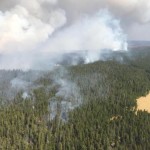
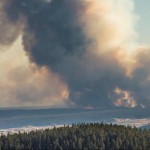 There is a fire burning in Yellowstone National Park. There are fires burning all over the western United States, as a matter of fact, but this particular fire bring back memories of the last big fire in Yellowstone National Park, and just how upset everyone was over the Let It Burn policy. Now, here we are again with a lightning caused fire burning in Yellowstone National Park, and no effort being made to fight it…unless structures end up being in danger of destruction.
There is a fire burning in Yellowstone National Park. There are fires burning all over the western United States, as a matter of fact, but this particular fire bring back memories of the last big fire in Yellowstone National Park, and just how upset everyone was over the Let It Burn policy. Now, here we are again with a lightning caused fire burning in Yellowstone National Park, and no effort being made to fight it…unless structures end up being in danger of destruction.
As with the 1988 fire, they tell us that the Natural Burn policy, another name for the Let It Burn policy, is in effect for this fire. The biggest problem with that policy is, of course, is that a fire burning unchecked can get so far out of control that it burns beyond human ability to put it out. It becomes an impossible task. That is what happened in 1988, and the whole nation was angry about it. In the end, that fire burned 1.2 million acres. Many people had the impression that the Park Service had failed badly. Nearly a third of Yellowstone National Park was badly burned. The Park Service said that the situation was inevitable because of the drought. Still, most people, me included, felt that if they had tried to fight it sooner, they could have saved a lot of the park from the hideous scarring damage it ended up with.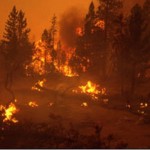

I understand that Yellowstone National Park has several fires each year, and that they usually burn themselves out in a short period of time, but in drought years, the Park Service simply can’t allow the fires to go. My concern with the current fire is that we are already at 2594 plus acres burned. How quickly is this fire going to get out of hand and how long before they will decide to do something about it?
The Yellowstone National Park fire of 1988 started in June and burned into November. It is a summer I will never forget. Our skies were constantly filled with smoke. The air stunk from the acrid smoke. It was hard for people to breathe. You couldn’t get away from it. I know this is how every person who lives in a fire area feels. I know I don’t have to explain this to anyone who has been around fires much. They already know more about wildfires than they ever wanted to.
The important thing for the government and the park service to remember is that the people of this nation love 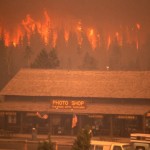
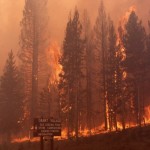 Yellowstone National Park, our oldest national park. It existed before the states where it is located were even states. I truly understand that fires are a natural part of the forest ecosystem, and that they get rid of dry brush that could bring about a worse fire, but I can’t see that it serves any good purpose to let 1.2 million acres of beautiful forest land burn and not even try to stop it. It destroys the homes of wildlife. It hurts the economy of the area it is in. All I ask is that the Park Service and the government remember just how important Yellowstone National Park is to the people of this nation.
Yellowstone National Park, our oldest national park. It existed before the states where it is located were even states. I truly understand that fires are a natural part of the forest ecosystem, and that they get rid of dry brush that could bring about a worse fire, but I can’t see that it serves any good purpose to let 1.2 million acres of beautiful forest land burn and not even try to stop it. It destroys the homes of wildlife. It hurts the economy of the area it is in. All I ask is that the Park Service and the government remember just how important Yellowstone National Park is to the people of this nation.
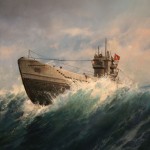 Submarines have been around a long time, but during the world wars, Germany built a submarine that was superior to any other submarine of the time. Called the U-Boat, the name was short for Unterseeboot, or under sea boat. Winston Churchill said, “the only thing that ever really frightened me during the war was the U-boat peril.” Churchill identified the threat that the U-Boats posed. The Atlantic Lifeline was vital to Britain’s survival. If Germany had been able to prevent merchant ships from carrying food, raw materials, troops and their equipment from North America to Britain, the outcome of World War II could have been very different. Britain might have been starved into submission, and her armies would not have been equipped with American built tanks and vehicles. The U-Boats were a serious threat. The Battle of the Atlantic was a must win situation. If Germany won that battle, Britain would likely have lost the war.
Submarines have been around a long time, but during the world wars, Germany built a submarine that was superior to any other submarine of the time. Called the U-Boat, the name was short for Unterseeboot, or under sea boat. Winston Churchill said, “the only thing that ever really frightened me during the war was the U-boat peril.” Churchill identified the threat that the U-Boats posed. The Atlantic Lifeline was vital to Britain’s survival. If Germany had been able to prevent merchant ships from carrying food, raw materials, troops and their equipment from North America to Britain, the outcome of World War II could have been very different. Britain might have been starved into submission, and her armies would not have been equipped with American built tanks and vehicles. The U-Boats were a serious threat. The Battle of the Atlantic was a must win situation. If Germany won that battle, Britain would likely have lost the war.
From 1918 on, Germany was not supposed to have submarines or submarine crews. However, no checks were in place to stop any research into submarines in Germany and it became clear that during the 1930’s, Germany had been investing time and men into submarine research. Their research and subsequent development of the U-Boat made it a submarine that was very difficult to locate and that made it extremely dangerous. They developed the Enigma machine, which was a series of electro-mechanical rotor cipher machines developed and  used in the early to early-mid twentieth century for commercial and military usage. Enigma was invented by the German engineer Arthur Scherbius at the end of World War I. The codes it could provide were difficult to decipher. German military messages enciphered on the Enigma machine were first broken by the Polish Cipher Bureau, in December 1932. This success was a result of efforts by three Polish cryptologists, Marian Rejewski, Jerzy Rózycki and Henryk Zygalski, working for Polish military intelligence. Rejewski reverse-engineered the device, using theoretical mathematics and material supplied by French military intelligence. Then, the three mathematicians designed mechanical devices for breaking Enigma ciphers, including the cryptologic bomb. In 1938, the Germans made the machine more complex, and increased complexity was repeatedly added to the Enigma machines, making decryption more difficult and requiring further equipment and personnel. It was more than the Poles could readily produce.
used in the early to early-mid twentieth century for commercial and military usage. Enigma was invented by the German engineer Arthur Scherbius at the end of World War I. The codes it could provide were difficult to decipher. German military messages enciphered on the Enigma machine were first broken by the Polish Cipher Bureau, in December 1932. This success was a result of efforts by three Polish cryptologists, Marian Rejewski, Jerzy Rózycki and Henryk Zygalski, working for Polish military intelligence. Rejewski reverse-engineered the device, using theoretical mathematics and material supplied by French military intelligence. Then, the three mathematicians designed mechanical devices for breaking Enigma ciphers, including the cryptologic bomb. In 1938, the Germans made the machine more complex, and increased complexity was repeatedly added to the Enigma machines, making decryption more difficult and requiring further equipment and personnel. It was more than the Poles could readily produce.
Finally there was a breakthrough. The astonishing achievements of the codebreakers of Bletchley Park saved countless lives. At their peak, there were 12,000 codebreakers at Bletchley Park, 8,000 of them women. The codebreakers helped bring victory in North Africa by giving British commander General Montgomery details of 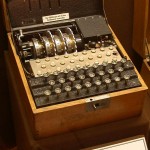 Erwin Rommel’s battle plans and providing the routes of the Nazi supply convoys. This allowed the Royal Navy the opportunity to sink them. Prior to the codebreakers, the U-Boats were only sunk after damage or near damage was done to other ships. Such was the case with the first sinking of a U-Boat. German submarine U-39 was a Type IXA U-boat of the Kriegsmarine that operated from 1938 to the first few days of World War II. On 14 September 1939, just 27 days after she began her first patrol, U-39 attempted to sink the British aircraft carrier HMS Ark Royal by firing two torpedoes at her. The torpedoes malfunctioned and exploded just short of the carrier. In retaliation, U-39 was immediately hunted down by three British destroyers. She was disabled with depth charges, and subsequently sunk. All crew members survived and were captured.
Erwin Rommel’s battle plans and providing the routes of the Nazi supply convoys. This allowed the Royal Navy the opportunity to sink them. Prior to the codebreakers, the U-Boats were only sunk after damage or near damage was done to other ships. Such was the case with the first sinking of a U-Boat. German submarine U-39 was a Type IXA U-boat of the Kriegsmarine that operated from 1938 to the first few days of World War II. On 14 September 1939, just 27 days after she began her first patrol, U-39 attempted to sink the British aircraft carrier HMS Ark Royal by firing two torpedoes at her. The torpedoes malfunctioned and exploded just short of the carrier. In retaliation, U-39 was immediately hunted down by three British destroyers. She was disabled with depth charges, and subsequently sunk. All crew members survived and were captured.

 A few days ago, a man commented on one of my stories, saying that he was Mary LuLu Taylor Leary Begier Warren’s great grandson. Joe Brown comes from her marriage to James Begier, the man she married after James Leary passed away. LuLu and James had three children, Minnie, John, and Mable. Mabel Claire married Edward Anthony Brown, and they had three children, Charles, Frank, and Mary. Frank Brown married Mary Lou Conway, and Frank Joseph (Joe) Brown is their son. Joe is my husband Bob Schulenberg’s second cousin once removed. Finding a new cousin is always exciting for me, but with the discovery of Joe, comes so much more. Joe brings with him a Gold Mine…a true Gold Mine. Joe has sent me pictures of his family, and his own drawings too. In return I have sent him pictures of our family and my in-laws family, so we are working on getting acquainted.
A few days ago, a man commented on one of my stories, saying that he was Mary LuLu Taylor Leary Begier Warren’s great grandson. Joe Brown comes from her marriage to James Begier, the man she married after James Leary passed away. LuLu and James had three children, Minnie, John, and Mable. Mabel Claire married Edward Anthony Brown, and they had three children, Charles, Frank, and Mary. Frank Brown married Mary Lou Conway, and Frank Joseph (Joe) Brown is their son. Joe is my husband Bob Schulenberg’s second cousin once removed. Finding a new cousin is always exciting for me, but with the discovery of Joe, comes so much more. Joe brings with him a Gold Mine…a true Gold Mine. Joe has sent me pictures of his family, and his own drawings too. In return I have sent him pictures of our family and my in-laws family, so we are working on getting acquainted.
Joe has been researching his family tree too, so we have a lot to talk about and a lot to share. He has access to a bunch of pictures from a part of Bob’s family that I know…some well, some only from my own research and stories from Bob’s grandmother, Vina Leary Schulenberg Hein. Joe, however, has much information, and many 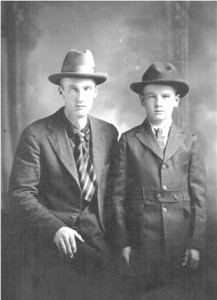
 pictures…pictures of people I didn’t think I would ever have and pictures of people I know well, when they were just children. I am so overwhelmed by all this and his generosity, that it brings tears to my eyes. What a gift he has given me and the rest of the family too, as this story will serve to inform them of this amazing gift we have received. Overwhelming and amazing!! Receiving these pictures was like being given a part of our family back. I have often wondered what Bob’s grandma, Vina Leary Schulenberg Hein looked like when she was a girl. Now I know. She was a pretty girl with long ringlets. I have never seen a picture of her brother, and now I have several of them, including one with his wife, Rose Schulenberg Leary. And the only picture we had of Marion Chester Leary was the one I have used in stories in the past. My father-in-law only knew of that one. Now I have several of him too. And I have pictures of Chester’s half siblings Minnie Begier Morgan, John Begier, and Mable Claire Begier Brown. I have pictures of the history that has taken place in Forsyth, Montana, where much of Bob’s family history is centered. Of course I can’t include them all here, so they will be used in a future story. I simply could not feel more blessed.
pictures…pictures of people I didn’t think I would ever have and pictures of people I know well, when they were just children. I am so overwhelmed by all this and his generosity, that it brings tears to my eyes. What a gift he has given me and the rest of the family too, as this story will serve to inform them of this amazing gift we have received. Overwhelming and amazing!! Receiving these pictures was like being given a part of our family back. I have often wondered what Bob’s grandma, Vina Leary Schulenberg Hein looked like when she was a girl. Now I know. She was a pretty girl with long ringlets. I have never seen a picture of her brother, and now I have several of them, including one with his wife, Rose Schulenberg Leary. And the only picture we had of Marion Chester Leary was the one I have used in stories in the past. My father-in-law only knew of that one. Now I have several of him too. And I have pictures of Chester’s half siblings Minnie Begier Morgan, John Begier, and Mable Claire Begier Brown. I have pictures of the history that has taken place in Forsyth, Montana, where much of Bob’s family history is centered. Of course I can’t include them all here, so they will be used in a future story. I simply could not feel more blessed.
Joe has told me that he has much more information to share with me, and while I thought I didn’t have very much to share in return, I am finding that I have the continuing story on the Schulenberg side, at least, and he has the continuing family of his side. That is an amazing combination, and with the history that he knows, I 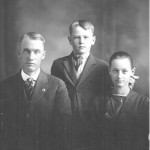
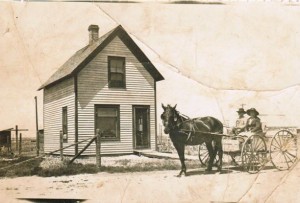 hope that I will be able to contribute some history too. Neither of us live in the area that we are talking about…Forsyth, Montana…and yet a lot of the family history took place there. What I do have is the stories told to me by my husband’s grandmother, our beloved Vina Leary Schulenberg Hein, and the stories told to me by my in-laws, Walt Schulenberg and Joann Knox Schulenberg. I am eager to share all of this history with Joe and his family, my family, and my readers. It’s going to be an incredible journey.
hope that I will be able to contribute some history too. Neither of us live in the area that we are talking about…Forsyth, Montana…and yet a lot of the family history took place there. What I do have is the stories told to me by my husband’s grandmother, our beloved Vina Leary Schulenberg Hein, and the stories told to me by my in-laws, Walt Schulenberg and Joann Knox Schulenberg. I am eager to share all of this history with Joe and his family, my family, and my readers. It’s going to be an incredible journey.
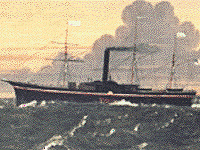 The San Francisco gold rush was a crazy time in American history. It was almost giddy in many ways. Gold does funny things to people. Just the thought of striking it rich made people pull up stakes and move west to try their hand at gold mining. Once people had made their fortunes, many decided to head back home to the east. Apparently the idea of wagon training back was not so appealing on the journey home, so these now, people of wealth decided to go by ship. The easiest crossing was through the Panama area. Of course, the Panama Canal was not built yet, although the French had tried to do so, but it wasn’t done yet. So the trip became a two ship journey.
The San Francisco gold rush was a crazy time in American history. It was almost giddy in many ways. Gold does funny things to people. Just the thought of striking it rich made people pull up stakes and move west to try their hand at gold mining. Once people had made their fortunes, many decided to head back home to the east. Apparently the idea of wagon training back was not so appealing on the journey home, so these now, people of wealth decided to go by ship. The easiest crossing was through the Panama area. Of course, the Panama Canal was not built yet, although the French had tried to do so, but it wasn’t done yet. So the trip became a two ship journey.
On August 20, 1857, several hundred passengers in San Francisco boarded the SS Sonora, of the Pacific Mail Steamship Line, and headed south toward Panama City. The 1857 value of the gold on board was 1.6 million, so just imagine today’s value. Thousands of freshly minted 1857-S double eagles, some earlier $20 coins, ingots, and gold in other forms were among the treasures. Some of the double eagles were stacked in long rows or columns and nestled in wooden boxes. Elsewhere around the ship, passengers had their own stash in purses and boxes reflecting their success in the land of gold. Once they arrived in Panama City, they were transported by train to on the Panama Railroad, which was a 48-mile line, completed in 1855 and had facilitated the crossing of the isthmus in about three or four hours as opposed to paddling and tramping through the jungles for several days. When the train arrived in Aspinwall, the passengers disembarked, and the treasure was transported to storage.
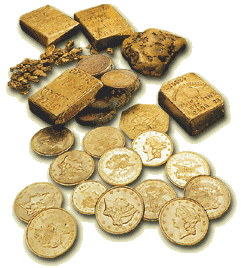 The next leg of the trip was aboard the side-wheel steamer SS Central America. The ship had been called the SS George Law, but the name was later changed to the SS Central America. It was now on its forty-fourth voyage for the Atlantic Mail Steamship Company. The Atlantic Mail Steamship Company was operating under federal mail contract to provide mail to the people between the east and west. The steamers had Navy captains at the helm, men of proven reputation and experience. Capt. William Herndon commanded the Central America.
The next leg of the trip was aboard the side-wheel steamer SS Central America. The ship had been called the SS George Law, but the name was later changed to the SS Central America. It was now on its forty-fourth voyage for the Atlantic Mail Steamship Company. The Atlantic Mail Steamship Company was operating under federal mail contract to provide mail to the people between the east and west. The steamers had Navy captains at the helm, men of proven reputation and experience. Capt. William Herndon commanded the Central America.
In early September 1857, the gold treasure was carefully packed aboard. The passengers found their cabins, and all were ready for the pleasant voyage to New York City. It was an ideal time of year for travel. A few days later, on September 7, 1857, the ship docked in the harbor of Havana. It was a popular stop for the passengers, who set about buying souvenirs and exploring the sights of the town. The trip toward New York continued to be pleasant. The skies were sunny and the sea smooth…temporarily.
At 5:30am on Wednesday, September 9, the ship’s second officer noted that the ship had gone 286 nautical miles in the preceding 26½ hours. He noted that a breeze was kicking up, and perhaps they were in for a storm, but expressed no concerns, because they were experienced and could handle a storm should it occur. That would prove to be the first mistake made. The storm grew furious and they were too far from a port to do much except keep the SS Central America into the waves. By Friday morning, September 11, the crew was still in control, but the ship was taking on water through the drive shaft, broken or open lights and elsewhere. The ship was tossing violently. It was virtually impossible to feed coal into the boilers.
At 11am Captain Herndon told the passengers that the ship was in grave danger. He enlisted the help of all men to bail water with a bucket brigade. By 1:00 in the afternoon the rising water in the hold doused the boiler 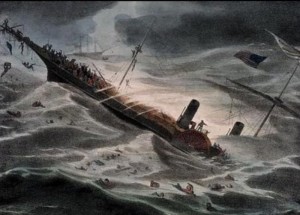 fires. The ship’s paddlewheels stopped. The SS Central America was at the mercy of the sea. By Saturday, the 12th of September, 1857, the storm started to pass, but it was too late. The SS Central America was doomed. The people were told to abandon ship, and the SS Central America went down with all of their treasure. In all, 425 lives were lost to the sea. Only 153 were pulled from a watery grave by the brig Marine, which was also damaged by the storm, though not to the degree of the SS Central America. The ship was discovered again on September 11, 1988, almost exactly 131 years after she went down in a hurricane on September 12, 1857. It was a rich find for Thomas G Thompson and his crew…and the museums who would reap much of the benefits.
fires. The ship’s paddlewheels stopped. The SS Central America was at the mercy of the sea. By Saturday, the 12th of September, 1857, the storm started to pass, but it was too late. The SS Central America was doomed. The people were told to abandon ship, and the SS Central America went down with all of their treasure. In all, 425 lives were lost to the sea. Only 153 were pulled from a watery grave by the brig Marine, which was also damaged by the storm, though not to the degree of the SS Central America. The ship was discovered again on September 11, 1988, almost exactly 131 years after she went down in a hurricane on September 12, 1857. It was a rich find for Thomas G Thompson and his crew…and the museums who would reap much of the benefits.

